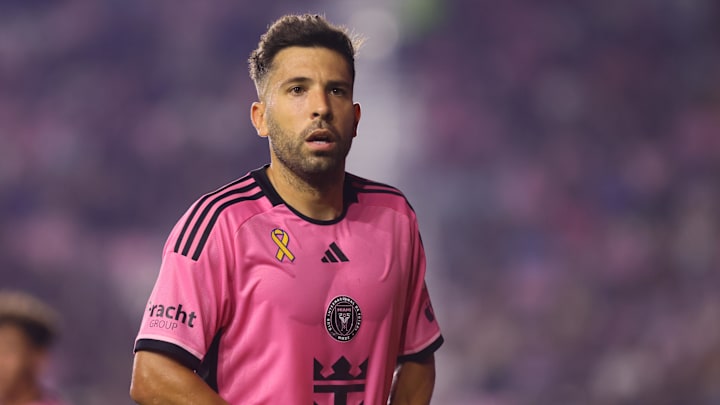What Is a Full-Back in Soccer?

Full-backs in soccer possess a versatile skillset that allows them to contribute on both the attack and the defense for 90 minutes every match.
When most soccer fans think of the best players in the world, they are quick to name flashy goal scorers, midfield wizards, or gritty defenders. After all, when players like Erling Haaland, Jude Bellingham, and Virgil van Dijk exist, it is impossible not to sing their praises, especially as they continue to make otherworldly plays.
Full-backs rarely grab the headlines; in fact, they are often overlooked and underrated on teams full of star players. The position, though, warrants a closer look, and deserves respect from even the most causal soccer fans.
Here, Sports Illustrated breaks down a full-back's responsibilities on the soccer pitch to better understand the position.
What is a full-back in soccer?
A full-back in soccer is also known as a left-back or a right-back. In a traditional formation, a left-back and right-back play on either side of the back line, adopting a wide, yet defensive position.
Their job is to mark the opposing team's wingers and make sure they close down any open space on the counter attack.
Different positioning of full backs
— Modern Football Analyst (@VideosModern) November 16, 2022
Narrow full back: closer to teammates + more passing options
Wide full back: use vacant space
Inverted full back: change structure pic.twitter.com/X9wA3RNRdd
Full-backs also have an offensive responsibility. Although they are often not as impactful as midfielders in creating scoring opportunities, they are still a vital part of the attack. The best full-backs in the world, like Liverpool's Trent Alexander-Arnold, can break free on the flanks and deliver quality crosses in the final third.
What is the difference between a full-back and a wing-back?
A wing-back is a positional variation of the traditional full-back.
Players in these positions tend to stick more closely to the flanks and are more offensive minded. They are still expected to defend, but the pressure to do so is taken off them slightly by the fact they usually operate either side of three center backs.
A good example of a wing-back in today's game would be Bayern Munich and Canada star Alphonso Davies. He started his career as a traditional winger, but has adapted his position over time to take on more defensive responsibilities.
Who are the best full-backs evers?
There have been many examples of world-class full-backs over the years, including England and Chelsea legend Ashley Cole, Germany icon Philipp Lahm, and former Brazil star Roberto Carlos.
Perhaps the best-ever, however, is Carlos' compatriot, Cafu.
The ex-Roma and AC Milan man, who captained Brazil to the World Cup in 2002, was the complete right-back, highly adept in both attack and defense, and exhibiting a flawless combination of soccer intelligence, technical prowess, and creative flair.
Has a full-back ever won the Ballon d'Or in soccer?
No, a full-back has never won the Ballon d'Or in soccer. In recent times, the prestigious award has primarily been given to forwards, like Cristiano Ronaldo, Lionel Messi, and Karim Benzema. In fact, Luka Modrić, Real Madrid and Croatia's central midfielder, is the only non-forward to win the coveted award in almost two decades.
What is a "modern" full-back?
In the past, full-backs were primarily tasked with staying back in defense to neutralize opposition wingers. However, in the modern game, they are now expected to contribute actively to both defense and attack.
Hence, a "modern" full-back in soccer refers to a player in the full-back position who combines defensive duties with significant attacking responsibilities.
Some great examples of modern full-backs are Liverpool duo Andrew Robertson and the aforementioned Alexander-Arnold, who get up-and-down their respective flanks tirelessly throughout matches.
READ THE LATEST SOCCER NEWS, RUMORS, MATCH PREVIEWS AND REACTION
feed

